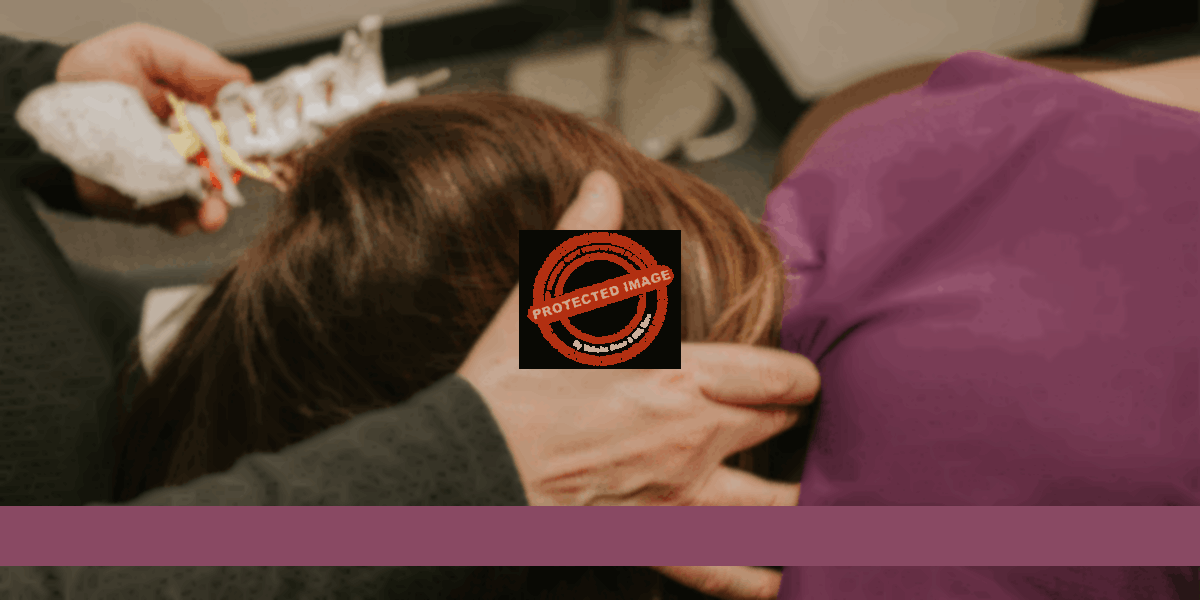
Throughout my 30 years of experience as a licensed massage therapist and 18 years of providing one-on-one personalized training, clients have regularly asked why the feel-good effects of stretching, rolling on a lacrosse ball, foam rolling, and actively releasing muscles with deep tissue massage haven’t lasted.
My short answer to that question is this: While the approaches mentioned in the previous sentence remain popular today, they fail to change what your brain perceives.In other words, everything you’ve done up to this point hasn’t allowed for increased stability. And stability is what changes what your brain perceives.
Instead of pretending you aren’t compensating for every pain, injury, surgery, and pregnancy you’ve had over your lifetime, and ignoring how your brain has figured out how to adapt, I do the opposite of what most practitioners who work with the musculoskeletal system do: I ignore tight muscles (and I think you should too!).
• Jump to what most practitioners can’t deliver on
• Jump to how to work with me online
• Jump to read my body of work
• Jump to FAQ
• Jump to address and airports

When it comes to the health of your muscles and joints, there’s tremendous value in doing what increases stability. Then (and only then!) will the feel-good feelings of having more mobility and flexibility last longer than twenty-four hours.
When your muscles are fully prepared to provide stability and oppose the constant pull of gravity, the daily reminders to sit upright or stand up straight are no longer necessary.
What My Clients Are Saying
He is an expert—likely the top 1% of his profession. — JonRick got me back to feeling normal again after my hip replacement and, more recently, post-shoulder surgery. I recommend giving Rick a try if you’re in pain or not happy with where you have gotten with your physical therapy. — Liz
I haven’t felt how I feel today in 30 years, and I have Rick Merriam to thank for that!
— Drew
Even though I was skeptical that anyone could restore stability and improve function, I was willing to try anything. So, four days before my race, I went to Rick. The first thing Rick noticed was that I was wearing the wrong type of shoe for my foot and the way I walk. He recommended a better shoe, which I purchased that day.Rick worked with me for two hours, and I could not believe the difference he made in such a short time. I went from hobbling after painfully finishing 3 miles to easily running 10 miles. — Deidra
Rick’s depth of knowledge and expertise are what set him apart!
— Pranay
I suffered a severe injury a few years ago, and surgery, rehab, chiropractic, and ART [Active Release Technique] didn’t help. But then I found Rick, and I was able to start exercising again. — Russ
A friend sent me an article on plantar fasciitis that Rick wrote. It blew my mind and gave me hope. We had three sessions in total. The payoff: I don’t feel that horrible foot pain anymore, and I can walk barefoot around the house. — MistyThe squeeze is worth the juice! — Walter
I had a full travel day on Wednesday, and as I was walking up the jetway, I realized that I had spent several hours walking and sitting at airports and on airplanes with ZERO sciatic pain! — Craig
Having shed tears of joy and pain, I settled into my airplane seat, understanding I was forever changed. — Barbara
I haven’t been to the chiropractor in nine months, and I canceled my shot. My husband is thrilled that he doesn’t have to watch me stretch in front of the TV anymore. Thank you, Rick!
— Sheryl
I had shooting/burning neck and shoulder pain from a gym injury for almost 2 years. One month it got so bad I could barely sleep lying down, and even sitting while driving felt impossible. I’ve done physical therapy, chiropractic, stim work (NeuFit), and traditional massage. None of it worked. Rick’s technique is not a regular massage, and his knowledge of the body, mechanics, and muscle attachment/anatomy is doctoral.He got my muscles activated and working correctly again. — Adrienne
Rick overdelivers! — KeithRead in-depth client testimonials.

The Truth: Neuroplasticity allows your brain to reorganize at any age.
For neuroplastic changes to take effect, your brain has to recognize that stability has increased in positions where there’s instability at a spinal joint, for instance.

Rather than move in the direction of becoming more and more fragile as you grow older, which is what stretching, actively releasing muscles, spinal adjustments, and arch supports allow for—decide to take the wheel now—and remain antifragile as you grow older.

Compensation is Cumulative
Whether you spend your days sitting at a desk at work, doing yardwork, or competing on the field of play, ~99% of the practitioners who work with the musculoskeletal system don’t have the skill set to figure out how you’re compensating differently from the eight people who walked through the door before you.One-size-fits-all common knowledge exercises don’t address underperforming muscles (hint, hint). Is this your first time reading that underperforming muscles are the reason for instability, and ultimately, muscle tightness?
Remaining true to its nature and without your knowledge or consent, your brain is hardwired to signal muscles to tighten to compensate for the stability that the underperforming muscles are neurologically incapable of providing.
Tight muscles are a sensation and a symptom that, like pain, aren’t worth chasing.
As you process this train of thought to its logical conclusion, I’ll give you another piece of second-layer knowledge: Spinal adjustments (aka stretching), self-massage tools, releasing muscles with deep tissue massage, and stretching fail to get you to where you’re functioning better than before the pain or injury.

You can’t have tight muscles without underperforming muscles.
The next time someone who specializes in working with your musculoskeletal system tells you that your muscles are tight, ask them, Can you identify the underperforming muscles?
Then, watch for the blank stare.
Ignoring underperforming muscles as if they don’t exist has led to countless surgeries that could have been avoided.
Body of Work (the Highlights)
My 30 years of experience as a licensed massage therapist include thousands of one-on-one sessions as a nationally certified personal trainer.
Since serving as the biomechanics consultant and massage therapist at ESPN, where I worked with sports and work-related injuries for on-air talent and the great people behind the scenes, I have devoted a great deal of time, energy, and attention to developing an approach that includes getting to the root cause of pain, improving performance, and preventing injuries before they occur.I taught Kinesiology (the study of human movement) for 15 years.
Most recently, I taught kinesiology at the Parker University School of Massage Therapy in Dallas, TX.
I wrote the foreword for the 1st edition of Joseph Muscolino’s Kinesiology textbook. I’ve also been quoted in Runner’s World UK, Massage & Bodywork, and Massage Magazine.
I’m a member of the ABMP (Associated Bodywork & Massage Professionals) and the AMTA (American Massage Therapy Association).
Is pronation bad? How about overpronation?To begin with, pronation is normal. And if you overpronate, that’s normal for you!
When you walk, your lead foot initiates shock absorption, which, when free to move, starts a combination of motions that end all the way up at your jaw.
When you swing a golf club, pronation of your spine and pelvis occurs from the top down, making your foot the last part of your body to pronate.
Regardless of the activity, artificially supporting your arches weakens the muscles throughout your foundation and prevents your feet from functioning as they were designed to move when interacting with the ground.
If you want to learn more, listen to my conversation with Steven Sashen, the founder of Xero Shoes and the host of The Movement Movement Podcast.

Get Back Spring In Your Step
If you’ve dealt with plantar fasciitis (PF), you lost the spring in your step long before the heel pain and calf tightness began.Until muscles throughout your trunk and spine are neurologically capable of providing stability, the muscles throughout your feet won’t generate the force required to overcome gravity at the right time.
To escape the hold that chasing pain and muscle tightness has on you, do what ~99% of practitioners who work with the musculoskeletal system don’t have the skill set to do.

Whether you have neck, back, hip, knee, or foot pain, the neuromuscular deep tissue massage technique I provide will have you walking away from my treatment table with more muscles engaging at the right time, giving you more spring in your step.

While hundreds of billions of dollars have been thrown at chasing neck and low back pain in recent years, ~99% of the practitioners who work with the muscular and skeletal systems don’t have the skill set to find the positions where you have instability at a spinal joint.
Do you feel muscle tightness throughout your upper back and between your shoulder blades at the end of the day?

The Investment (that leads to antifragility)
Whether you work with me at my office or online, package pricing is an opportunity to increase stability, mobility, flexibility, and strength.Every one of your in-office sessions will be two hours, guaranteed.
The smallest package at my office is three sessions (for a total of six hours).

Smart Cut to Erase Pain and Muscle Tightness
• The first step: Confirm which of your 650 muscles are underperforming.• The second step is a comprehensive deep tissue neuromuscular massage technique to address the areas where the underperforming muscles attach to bones or, in some cases, ligaments (aka fascia).
Once the neurological feedback to the underperforming muscles is restored, like clockwork, your brain recognizes that the threat of instability has been erased.
As a result of increased stability, your brain recognizes that it’s no longer necessary to call upon tight muscles to restrict your range of motion. To say the same thing in a different way, when your brain recognizes that the threat of instability is no longer a reason to protect your ligaments, menisci, and spinal discs, the tight muscles will relax.
Are you stretching your piriformis because it feels tight?
Guess what happens when you address a piriformis muscle that feels tight when it isn’t?In most cases, the piriformis isn’t tight. Instead, it’s underperforming.
An underperforming piriformis can wreak havoc. For example, until your brain recognizes that your piriformis can provide stability, your hamstrings on the back of your thigh won’t have a stable pelvis to anchor off.
While conventional wisdom has you stretching, rolling on a lacrosse ball, and releasing your piriformis with deep tissue massage, all of those approaches fall short of improving your piriformis’s ability to pull its weight at the right time.
Watch this video to see how I address an underperforming piriformis muscle using a deep tissue neuromuscular massage technique.
Stop Stretching Your Piriformis and Do This Treatment Today!
Because I address the tendinous attachments of muscles confirmed to be unable to play their role to the best of their ability, I avoid collecting tight muscles that, as mentioned earlier, are a symptom and a sensation.
Massaging muscles doesn’t get any more specific than that!
• The third step is to increase the strength.
Instead of introducing one-size-fits-all common knowledge exercises when you’re compensating for previous injuries, surgeries, and pregnancies, to name a few things that contribute to compensation, we’ll do what allows for antifragility as you grow older.
With over three decades of experience with exercise progression to address muscle imbalances, I will recommend exercises specific to your fitness level.
• The fourth step is to address the neuromechanical piece of the puzzle.
Because stretches and one-size-fits-all common knowledge exercises increase compensation without getting to the root cause, countless people, who didn’t know what they didn’t know, have undergone surgeries that could have been avoided.
The consistent outcome of massaging the fascial attachments of muscles that aren’t neurologically capable of pulling their weight: More stability, mobility, flexibility, and strength.
If what you’ve read sounds too good to be true, keep in mind, we’re talking about a level of care and, as a result, outcomes that most practitioners who work with the musculoskeletal system don’t have the skill stack to deliver on.
FAQ
When I received a deep tissue massage, I was underneath a sheet or wearing a medical gown, and the massage therapist used lotion or oil. I noticed you address muscles through athletic clothing; why is that?Answer: Since providing deep tissue massage at the gym on the main campus of ESPN, I’ve preferred to address underperforming muscles through athletic clothing.
Because my massage technique doesn’t require sliding or gliding along your skin, there’s no need for massage oil or lotion.
When Exercise Adds Insult to Injury
Although I have yet to hear your story, I’m confident when I tell you this: Before you do a one-size-fits-all common knowledge exercise, muscles are neurologically incapable of performing to the best of their ability.When you do the recommended exercises before the underperforming muscles are addressed, your brain figures out how to compensate on every set and repetition.
Did you think to yourself, Well, I feel stronger?
You feel stronger because the muscles that are neurologically capable of performing their role are—in fact—stronger.
Because the underperforming muscles that, by definition, aren’t receiving the optimal amount of neurological input to contract optimally aren’t identified and addressed before a one-size-fits-all exercise, those muscles don’t get stronger.
So, regardless of how productive or even therapeutic one-size-fits-all exercises feel, when all the muscles responsible for producing the motion aren’t neurologically capable of pulling their weight, you unknowingly fall short of functioning better than you were before the pain or injury.
Increase Stability Online
When you work with me online. I’ll show you how to perform isometric exercises in positions where your muscles cannot provide stability.
Most Read Blog Posts
What No One Tells You About Releasing Your Piriformis MuscleWhen Custom Orthotics Do More Harm Than Good
Plantar Fasciitis Has Little To Do With Your Foot
Address
Engaging Muscles Massage
12700 Hillcrest Rd Ste 125 #143, Dallas, TX 75230
Engaging Muscles Massage is less than a mile south of the LBJ freeway (635) and across the street from the Dallas County Tax Office.
Travel
